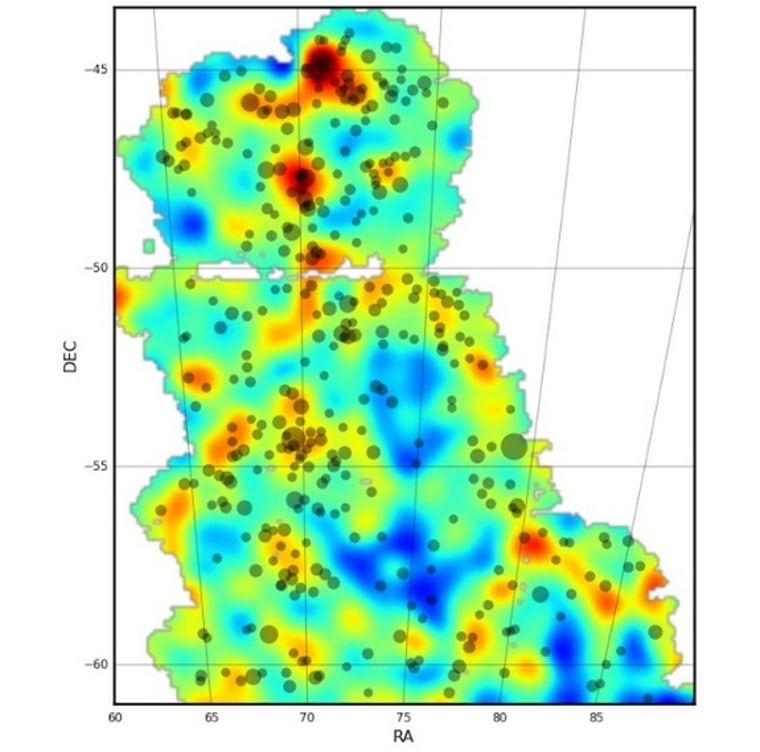In the universe, dark and light tend to cluster together, according to new maps that chart the location of dark matter over a large portion of the sky.
The new maps show that in some places there are large amounts of dark matter, while in others it is almost entirely absent. The researchers who made the maps also looked at the location of regular matter — huge clusters of galaxies — and show that the two appear to be linked: the galaxy clusters tend to lie close to where the dark matter lies.
The maps, produced from data taken by the Dark Energy Survey, were released on Monday at a meeting of the American Physical Society. The new maps are in agreement with current theories, which suggest that the enormous gravitational pull of dark matter would pull regular matter toward it — bringing the dark universe and light universe together.

The universe contains roughly five times more dark matter than regular matter, and the gargantuan gravitational force created by all that dark matter influences how galaxies form and evolve.
"Zooming into the maps, we have measured how dark matter envelops galaxies of different types, and how together they evolve over cosmic time," said Chihway Chang of the Swiss Federal Institute of Technology (ETH) in Zurich, and a lead author on the new analysis.
The data for the maps was taken using the 750 megapixel Dark Energy Camera — one of the highest-resolution cameras ever built, according to a statement from the American Physical Society. The camera is mounted on the 4-meter (13 feet) Victor M. Blanco telescope at the National Optical Astronomy Observatory's Cerro Tololo Inter-American Observatory in Chile.
The scientists using the Dark Energy Camera made their maps using another effect of dark matter's strong gravitational pull called gravitational lensing. Looking out at the universe, if a distant galaxy lies behind a very massive object like a patch of dark matter, the light from the galaxy can be warped slightly by the gravity. This warping of light by an otherwise invisible source of gravity is what scientists using the Dark Energy Camera look for to locate dark matter.
— Calla Cofield , Space.com
This is a condensed version of an article that appeared on Space.com. Read the entire story here. Follow Calla Cofield @callacofield. Follow Space.com on Twitter, Facebook and Google+.